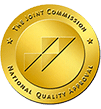
April 13, 2018 by Julie Miller, Editor in Chief
It’s shaping up to be a year of growth for addiction treatment centers. This is certainly true for Footprints to Recovery, which has three new centers in the pipeline and currently is in the process of completing two other launches in key markets.
“We’ll essentially go from two facilities—one in New Jersey and one in Illinois—to seven facilities in a year,” says Eliott Wolbrom, chief marketing officer.
In Wayne, Pa., a suburb of Philadelphia, Footprints held a ribbon cutting event a few weeks ago to officially open its partial hospitalization and outpatient center. Next on the list is a new standalone detox center that will come online in Mesa, Arizona, in early May.
Wolbrom tells Behavioral Healthcare Executive that Footprints’ existing outpatient centers in Arlington Heights, Ill., and Hamilton, N.J., have experienced high service demand, and the latest launches fit the organization’s natural growth strategy.
“Knowing that there’s a specific location where alcohol or substance abuse is particularly bad and there’s a great pool of top-notch clinical talent, that’s a flag that will make us look at the market,” he says.
For example, the Pennsylvania facility is just a 45-minute drive away from the New Jersey facility, but the need for treatment options in the region is significant enough to warrant the expansion. Demographics show a favorable market, and the site has easy access to public transportation.
In Arizona, the detox center will be “a big deal,” according to Wolbrom because it’s likely to be one of the largest in the Phoenix area. The region is also home to many college students who are within the patient population that increasingly will seek services, he says.
Patient population
Footprints’ patients are primarily young adults, ages 18 to 27, with some in their early 30s, Wolbrom says. And that trend echoes the national outlook. According to the 2016 National Survey on Drug Use and Health, individuals with opioid addiction are predominantly white, male and young, with 48% between the ages of 18 and 34.
He says the younger populations are wired differently than their older counterparts, and the total package of care must be refined for their preferences, from the clinical modalities to the look and feel of the centers’ design and architecture. For example, Footprints to Recovery programs offer yoga, art and music therapy. The Pennsylvania center includes design elements such as modern chairs that look like clear glass balls hanging from the ceiling and bold color schemes.
“The physical environment plays a big part,” Wolbrom says. “Our facilities, from an amenities perspective, feel more like a college dorm, and patients feel comfortable going there.”
Antiquated or institutional settings don’t resonate with the millennial population, he says. Footprints’ marketing strategy includes a robust digital and social media presence that emphasizes the aesthetic appeal of the centers as well as the clinical care.
“Our patients are young, and they don’t want to see ocean waves and hear Mozart and Beethoven music,” Wolbrom says. “They want to know the person they’re going to meet and open their hearts to will be able to relate to them.”
In addition to the forthcoming Arizona detox facility, Footprints to Recovery’s 2018 pipeline includes planned openings in Centennial, Colo.; a suburb of Boston; and Elgin, Ill., the site of its new inpatient, residential and acute detox center. Some medication-assisted treatment is offered, depending on the facilities’ individual clinical assets, and all programs include free alumni programs and skill-building workshops.
The for-profit organization is currently out-of-network with commercial insurers but is “strongly considering” in-network status in certain markets to increase access, Wolbrom says.
More News Coverage







